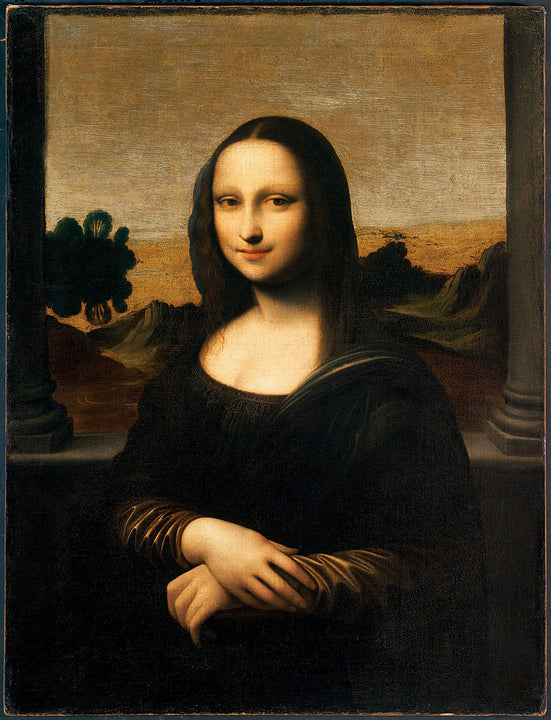
For those of us who love a good mystery, the story of the second Mona Lisa is a reminder that sometimes, even the most familiar masterpieces might have a hidden story lurking just out of sight.
The Isleworth Mona Lisa
The Mona Lisa is perhaps the most recognised painting in the world, but did you know that a second Mona Lisa exists - one that has sparked intrigue, controversy, and endless debate? This lesser-known painting, dubbed the Isleworth Mona Lisa, might just be the art world’s best-kept mystery, or its greatest scandal.
The story of the Isleworth Mona Lisa begins in the early 20th century when English art critic Hugh Blaker stumbled upon a painting in a manor house in Somerset that bore a striking resemblance to the Mona Lisa. After purchasing it, Blaker brought the artwork to his studio in Isleworth, London, which is how the piece earned its nickname. Unlike the familiar Mona Lisa, this version features a younger woman with a simpler background that is more vibrant and less shadowed than Leonardo’s version.
But what makes the Isleworth Mona Lisa more than just a curiosity is the claim that it might be an earlier version of da Vinci’s famous work. Some art historians and researchers argue that it was painted by Leonardo himself, suggesting that he created this version before perfecting the Mona Lisa we know today. If true, it would mean that the world has been gazing at one of two nearly identical masterpieces, each crafted by the same genius hand.

A True Leonardo or a Clever Copy?
The art world is divided on the authenticity of the Isleworth Mona Lisa. Supporters point to stylistic similarities, noting the characteristic sfumato technique (a soft blending of tones) that is famously associated with Leonardo. They argue that the Isleworth version could have been a preparatory work, created as a test run before Leonardo tackled the more complex final painting.
In the 2010s, the Isleworth Mona Lisa was subjected to extensive scientific testing, including infrared analysis and carbon dating. The results suggested that the canvas could indeed date back to Leonardo’s time. Most intriguingly, researchers uncovered an underdrawing with visible revisions beneath the paint layer, indicating an original composition rather than a mere copy. These findings fueled excitement among certain art historians who argued that this could be proof that Leonardo painted two versions of his famous portrait, possibly during multiple sittings with his muse, Lisa Gherardini.
However, skepticism persists. Many experts argue that the Isleworth Mona Lisa lacks the subtlety and mastery characteristic of Leonardo’s brushwork, attributing it instead to a skilled but lesser-known artist of the Renaissance. They suggest that differences in composition and background detail point to a deliberate imitation of Leonardo’s style, perhaps crafted to capitalise on the fame of the original. Adding to the doubts, they note that Leonardo typically worked on wooden panels, making this canvas version an unusual choice for him and raising further questions about its authenticity.
An Art World Enigma that Endures
To this day, the Isleworth Mona Lisa remains one of the art world’s most fascinating mysteries. While some experts have come forward with evidence suggesting Leonardo’s hand, others remain skeptical, pointing out inconsistencies that make it difficult to definitively attribute the work to him. Yet, its very ambiguity is what makes it so compelling. Is it a forgotten masterpiece, a brilliant copy, or a sophisticated hoax?
Art is often about what lies beneath the surface, the stories untold, and the mysteries that refuse to be solved. The Isleworth Mona Lisa embodies that spirit, drawing viewers in not only for its beauty but for the tantalizing question of whether this painting is truly the work of the great Leonardo da Vinci - or something else entirely.

